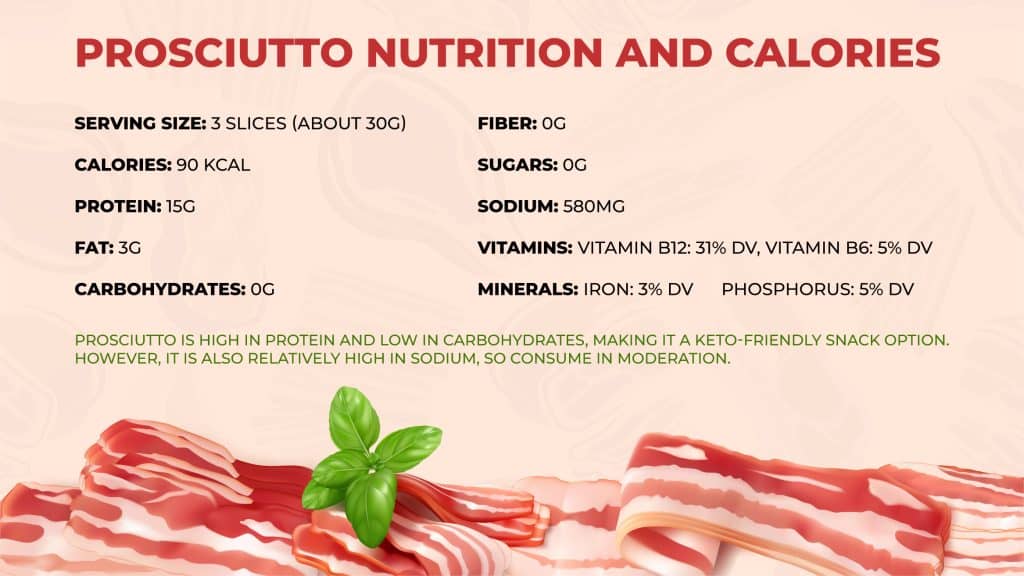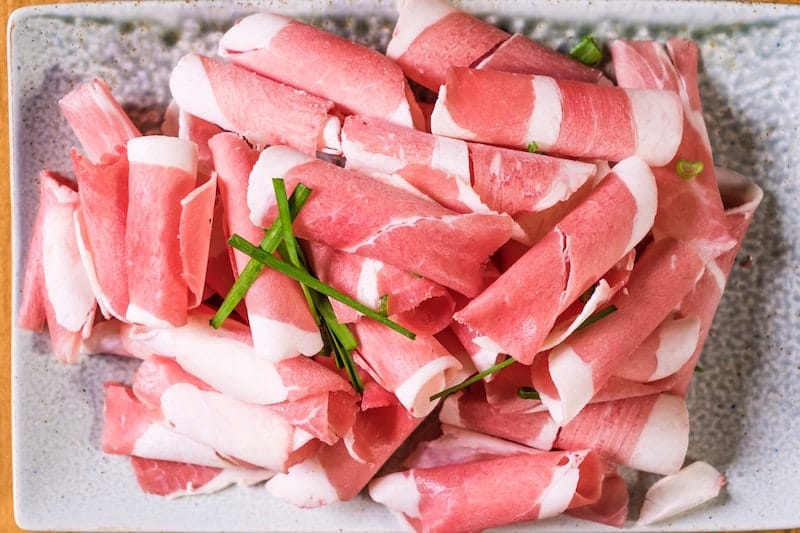What is Prosciutto? Everything You Need to Know
Prosciutto is an extremely popular type of meat. Maybe you’ve eaten it on a cheese board or on top of pizza.
But have you ever wondered what prosciutto really is and where it comes from? Read on to learn more.
What Exactly is Prosciutto?
Prosciutto means “ham” in Italian, and there are two types: prosciutto crudo and prosciutto cotto.
Prosciutto crudo is raw ham that’s been cured, and prosciutto cotto is cooked ham. Here in the US, when we talk about prosciutto, we’re usually talking about prosciutto crudo.
This article focuses on prosciutto crudo (which I’ll just refer to as prosciutto from here on), which again, is ham that’s been dried and cured.

What is Prosciutto Made Of?
As mentioned, prosciutto is a type of ham. But exactly what kind of meat is prosciutto?
Prosciutto is meat that comes from the hind leg of a pig (compare this to pancetta and bacon, which come from the belly of the pig).
Prosciutto almost always comes thinly sliced with thin strips of fat. It’s pink to red in color and has a delightful salty, ham taste.
It can definitely be distinguished from other types of ham, like serrano ham. Other cured meats it often gets compared to include speck, bacon, and capicola.
Where Does Prosciutto Come From?
Prosciutto originates from Italy and dates all the way back to the ancient Roman era.
As with most cured meats, Italians in this era started salting and curing ham to prolong its shelf-life and ensure they’d have meat to eat during the winter. Curing meat was a handy alternative in a time when freezing and refrigerating meat wasn’t a possibility.
Different regions of Italy make their own delectable versions of prosciutto. See my section below on the types of prosciutto for more details.
Is Prosciutto Raw?
Yes, prosciutto is raw, or in other words, it hasn’t been cooked.
Instead of being cooked to get rid of bacteria and make it safe to eat, prosciutto is dried and cured.
The drying and curing process eliminates moisture, which bacteria love and need to grow and multiply. Without moisture, bacteria can’t colonize the meat.
Dry curing prosciutto also creates an environment where trichinae, a parasite often found in omnivorous and carnivorous animals, can’t thrive.
This is why, when you buy prosciutto, you can eat it straight away without having to cook it. And, don’t have to refrigerate it, either.
If you make your own prosciutto, it’s crucial to get the drying and curing process right to make sure it’s safe to eat.
How to Eat Prosciutto
There are many different ways to enjoy this meat delicacy.
You can eat it by itself, enjoy it with cheese on a charcuterie board, use it to wrap other foods or skewer it with other foods, bake it to make it crispy and then crush it up into small pieces to use as a topping, put it on pizza, and more.
Prosciutto is such a versatile ingredient, and you can definitely get creative with it!
Types of Prosciutto
There are quite a few different types of prosciutto, mostly based on where in Italy they originate from. Let’s take a look at them.
Prosciutto di Parma
Prosciutto di Parma is the most well-known type of prosciutto from Italy. It’s aged for double the amount of time (at least 18 months) and has the perfect blend of salty and sweet flavor. Some versions can also have a particularly buttery taste.
It has to be made in the Parma region of Italy and can only come from specific breeds of pigs (Landrace, Duroc, and Large White).
Prosciutto Toscano
Prosciutto Toscano comes from Tuscany, Italy. Similar to Prosciutto di Parma, you can only call it Prosciutto Toscano if the pigs were born, raised, and butchered in Tuscany.
It’s made with unique Tuscan spices that include pepper and garlic. Overall, it has a more herbaceous flavor.
Prosciutto di San Daniele
Prosciutto di San Daniele comes from the small village of San Daniele in Italy. What distinguishes this type of prosciutto is that when it’s salted, the salt is pressed into the meat to create more depth in flavor.
Overall, it’s darker in color and sweeter compared to Prosciutto di Parma.
Prosciutto di Modena
Prosciutto di Modena comes from the province of Modena in Italy. This prosciutto is less salty but more aromatic compared to Prosciutto di Parma.
In Summary
Hopefully this gave you a good overview of what prosciutto really is. Definitely be sure to check out my other articles that dive more into this Italian delicacy!








